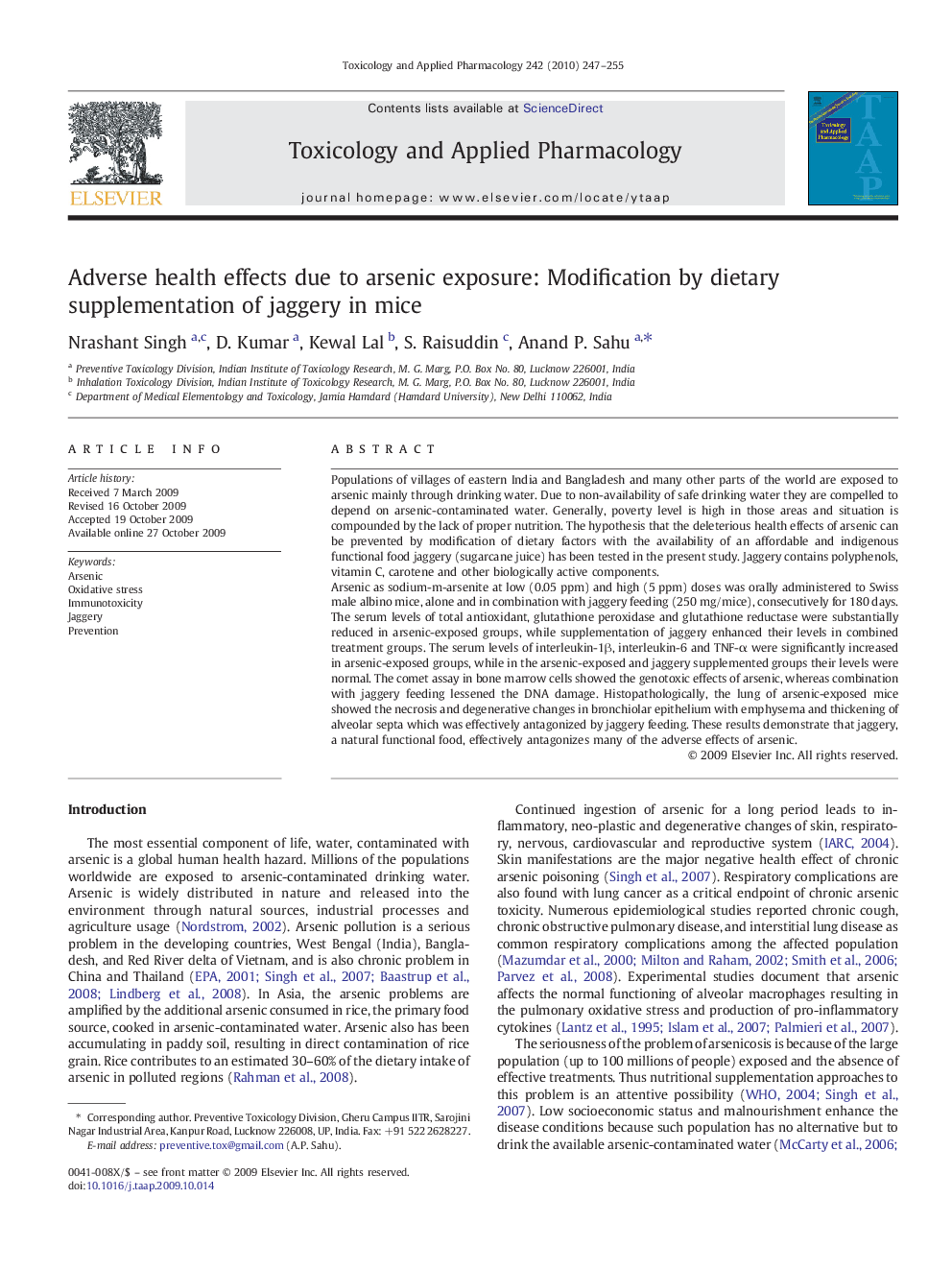| Article ID | Journal | Published Year | Pages | File Type |
|---|---|---|---|---|
| 2570468 | Toxicology and Applied Pharmacology | 2010 | 9 Pages |
Abstract
Arsenic as sodium-m-arsenite at low (0.05 ppm) and high (5 ppm) doses was orally administered to Swiss male albino mice, alone and in combination with jaggery feeding (250 mg/mice), consecutively for 180 days. The serum levels of total antioxidant, glutathione peroxidase and glutathione reductase were substantially reduced in arsenic-exposed groups, while supplementation of jaggery enhanced their levels in combined treatment groups. The serum levels of interleukin-1β, interleukin-6 and TNF-α were significantly increased in arsenic-exposed groups, while in the arsenic-exposed and jaggery supplemented groups their levels were normal. The comet assay in bone marrow cells showed the genotoxic effects of arsenic, whereas combination with jaggery feeding lessened the DNA damage. Histopathologically, the lung of arsenic-exposed mice showed the necrosis and degenerative changes in bronchiolar epithelium with emphysema and thickening of alveolar septa which was effectively antagonized by jaggery feeding. These results demonstrate that jaggery, a natural functional food, effectively antagonizes many of the adverse effects of arsenic.
Related Topics
Life Sciences
Environmental Science
Health, Toxicology and Mutagenesis
Authors
Nrashant Singh, D. Kumar, Kewal Lal, S. Raisuddin, Anand P. Sahu,
